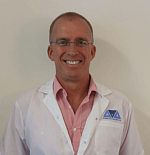Dr. Michael Tahl is a leading Israeli radiologist with unique methods of treating varicose veins, including non-surgical treatments. Director of the Department of Radiology at Assuta, the largest hospital in Israel. Involved in the treatment of various vascular diseases using the most innovative means of radiology.
In his daily practice, Dr. Tal strives to use minimally invasive procedures and vein treatment without surgery. He performs laser vein treatment and venous therapy using radio waves, and uses the unique Clarivein device to treat varicose veins.
Dr. Tal was born in Israel and graduated with honors from the Faculty of Medicine at the Hebrew University of Jerusalem. After an internship at the Chaim Sheba Medical Center in Tel-A-Shomer, he specialized in radiology at Drexel University Hospital in Philadelphia, in the USA. In 2000, he advanced his training in radiology at Yale University and soon became employed as a physician at Yale Hospital. Upon his return to Israel, Michael Tal was appointed Director of the Department of Radiology and Invasive Procedures at the Assuta Clinic.
Dr. Tal is a serious pioneering scientist known in the medical world for his research and development of new treatments using various advanced medical systems and devices.
One of the latest progressive inventions is the Clarivein device, which is a cutting-edge technique that allows varicose veins to be treated without pain and without surgery. This procedure takes a little time, does not require the use of anesthetics and allows the patient to return to their normal life immediately after surgery. This device has been tested by the FDA (Office for the Safety and Effectiveness of Drugs and Medical Devices) and has been successfully used worldwide. Dr. Tal conducts training workshops for future physicians in Israel and abroad on the use of the Clarivein device.
Michael Tal also lectures to students at Yale University in the USA and gives presentations on his specialty at many international medical symposia and conferences. Author of more than 40 scientific articles.

 English
English Hebrew
Hebrew










